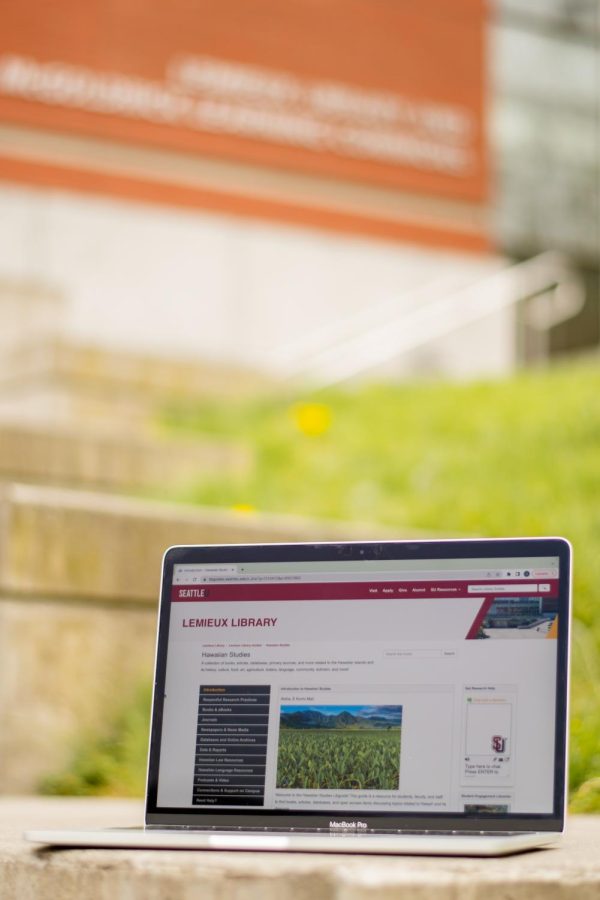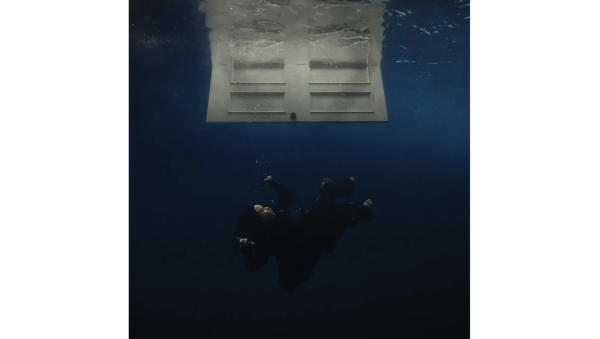Hawaiian Studies Adds More Sources for Seattle U Library
The Hui O Nani Hawai’i club has partnered with the Seattle University Lemieux Library to create a Hawaiian Studies library guide. This resource helps students, faculty and staff find articles and databases regarding Hawaiian culture. With the upcoming 60th annual Lūuʻ’au event on Saturday, April 23, the Seattle U Hui O Nani Hawai’i club is taking the initiative to share the rich history of Hawaiian cultures with the Seattle U community with the help of this new guide.
Shelley Carr, a Seattle U Lemieux librarian, contributed to the idea of putting the Hawaiian Studies guide together with the help of a Student Peer Research Consultant. She explained that her goal is to engage with students in an interdisciplinary way and support student scholarship outside programmatic lines.
“This Hawaiian Studies research guide idea came from my experiences with student research topics in classes and in research consultations with students. I met a number of students who were from Hawaiʻi and were interested in topics specifically related to Hawaiʻi. I felt that this was a good opportunity to create something to support that research,” Carr wrote in an email.
Shelley Carr worked closely with Student Peer Research Consultant Lily Kelly-Jervis, a student from Hawaiʻi. The work that Kelly-Jervis did mostly focuses on her Hawaiian heritage. She hopes students who are interested in learning about Hawaiian culture will check out the compiled resources.
“It’s important to feel culturally supported by your university, and for many Hawaiʻi and/or Hawaiian students, it’s important to be able to connect what you’re learning in university to home. There’s this idea that we have to leave home to learn, to then return home with our knowledge and apply our knowledge to improving Hawaiʻi’s circumstances, and this LibGuide is one step in supporting that journey,” Kelly-Jervis said. “As a senior, I saw an opportunity to leave something important behind, something that will hopefully grow and improve the educational experience of students hailing from Hawaiʻi.”
Carr and Jervis reached out to the Hui O Nani Hawai’i club and attended their first in-person meeting during winter quarter. They presented the proposal for the LibGuide and provided a survey for students to fill out. Some of the feedback they got was crucial in the making of this project.
“Some of the feedback we received in terms of the importance of access to Hawaiian knowledge is that it is not only a resource for Hawaiian students, but a resource for all students to learn about a place that they would not normally be able to. Not many get to truly learn about Hawaiʻi and the rich culture that is rooted there, and this can be an opportunity for students to widen their knowledge,” Kelly-Jervis said.
Joelle Cantiberos, the Hui O Nani Hawai’i cultural chair, played a huge role in determining the kinds of sources the library should include in the Research Guide.
“I suggested Shelley and Lily reach out to Kamehameha, my old high school, because their library is based on Hawaiian articles [and] books, and we have an archive with all those things. I suggested that they highlight Native Hawaiian authors when trying to look for books and resources,” Cantiberos said.
Besides suggestions from Cantiberos, Carr and Kelly-Jervis also used Ulukau, which is an open-access archive database that offers resources ranging from Wehewehe (an online Hawaiian dictionary), archived newspapers (Nūpepa) to full PDF books.
They also reached out to small Hawaiian bookstores on Oʻahu such as Nā Mea Hawaiʻi and its sister store, Native Books Hawaiʻi. They even went as far as to reach out to Jamaica Osorio, a Kanaka Maoli (Native Hawaiian) poet, educator and activist, for book recommendations on her Instagram.
The Lemieux Library’s Equity, Diversity and Inclusion Action Plan, aims to provide equitable delivery of library resources for students who are in traditionally underserved or marginalized groups. Their goal is to meet students’ needs academically or by making their voices feel reflected in the Seattle U community.
Carr and Kelly-Jervis are thrilled by how the LibGuide came together and how many sources they received.
“My favorite part about building this guide was seeing it grow and seeing it become something that can stand alone and speak for itself, and further than that, seeing the places we can go after this. I think this LibGuide is the first step in having the library reflect and celebrate the student body,” Kelly-Jervis said.
Carr’s favorite part of the process was learning about Hawaiian culture.
“I’ve never been to the islands and didn’t learn much about some of the specific details until I started work on this project. Hawaiʻi is a unique place with unique challenges and is unlike anywhere else in the world. I feel lucky that I’ve had the opportunity to learn more about this place that so many of our students call home,” Carr said.










